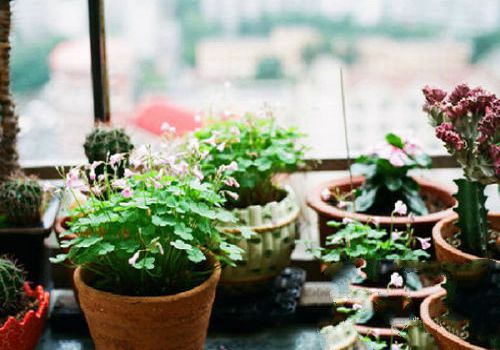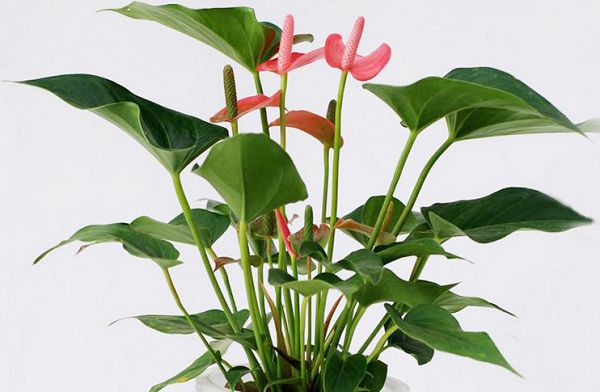Cultivation of Palm Flower Bonsai
Handheld flower bonsai is a kind of fashionable artistic bonsai ornaments. Whether it is craft flower bonsai or craft tree stump bonsai, it has the artistic characteristics of being close at hand, full of interest, unique style and strong appreciation. This is because the size of the basin is generally no larger than the palm of the hand, the volume is pocket, small and exquisite, it is not only exquisite and beautiful, but also has the charm of nature. When making handheld flower bonsai, we must pay attention to the consistency between the characteristics of the pot container and the adaptation of flowers and plants. Because all kinds of strange shapes and colors of the bonsai basin itself is an ornamental handicraft, if the flowers and plants planted in the basin are in harmony with the pot body, it can more fully show the sense of contrast of craft art; on the contrary, the aesthetic sense of art will be greatly affected. Generally speaking, multi-angular pots and square pots should be planted with hanging branches, shallow and long pots should be planted with oblique stem or straight stem, cliff or semi-cliff plants should be planted in round pots, and persistent root and bulb flowers should be planted in small open pots.
(1) the selection of bonsai plant varieties.
Due to the small size of bonsai, it generally requires small leaves, strong shade tolerance, high germination rate, easy to bend and tie branches, as usual, rhododendron, Hawthorn, June snow, Yingchun, Chinese wolfberry, canary, sparrow, kumquat and so on. Liana varieties are climbing vine Euonymus, ivy, Pubi vine and so on, herbaceous varieties are calamus, Scutellaria barbata, cypress and so on. Some plant varieties with strong roots are most suitable for making stump bonsai, such as June snow, Luohan pine, cypress, metasequoia, five-needle pine, Tianzhu, golden pine, pine and so on.
For craft stump bonsai, if we simply collect saplings after planting, pruning and pruning, until the shape is tied up to the finished product sales, it will take a long time. In order to effectively shorten the time and make miniature craft tree stump bonsai quickly and conveniently, we can go to some rock crevices and rock cliff slopes in nature to extensively collect and dig, look for those small tree stumps with short stem branches formed by natural erosion and artificial cutting, and make full use of their natural buckling and colorful forms to trim and shape appropriately along the tree potential. At the same time, it can be combined with technical means and artistic treatment, such as exposing the root system of the stump on the basin surface, making the branches intertwined, making the hanging roots form an exposed claw, and so on, in order to fully reflect the simple and strange, ancient painting of the whole pile scene. When going out to collect and excavate wild plants, attention should be paid to the selection in late autumn or early winter or on the eve of plant germination in the following spring, and the main root system should not be damaged as far as possible, so that the survival rate can be fully guaranteed after transplanting management.
(2) the configuration of bonsai soil.
In view of the small volume of miniature bonsai and less soil filling, tree stump bonsai is commonly used to mix rotten leaves, fine sand and garden soil evenly, or mainly with rotten leaf soil, mixed with appropriate amount of sand and plant ash. When potted flower varieties such as hanging orchid, asparagus, rose, etc., only need to be mixed with a little fine sand in the rotten leaf soil, while when cultivating flower varieties that prefer acid soil, such as jasmine, rhododendron, Milan, it is best to use soft acid peat soil and mix in a little black soil.
(3) daily cultivation and management of bonsai.
As there is only a small amount of soil in the small flowerpot, the small trees and flowers in the pot can not stand too much sunlight, so they should be placed in a ventilated and shaded environment. You don't need to water too much at ordinary times, just keep the soil moist. In late winter and early spring, appropriate amount of diluted rotten liquid fertilizer can be applied to ensure the sprouting and growth of the plant. The basin should be turned once a year. In addition to replacing the new rotten leaf soil, some old roots and diseased branches should also be properly trimmed when turning the basin, so as to promote the growth of new roots. At the same time, attention should be paid to adjusting and correcting the growth situation of plant branches and stems, and proper pruning, leaf cutting and bud picking should be carried out in order to keep the plant modeling posture perfect.
Related
- What if the leaves of potted flowers turn yellow?
- Florescence Control of several Flowers
- Anti-freezing technology and post-freezing nursing technology of flowers
- What is the classification of flowers? What are the common methods of flower classification?
- Prevention and control of alkali and acid damage of flowers in courtyard
- Technology of Anti-freezing and restoring growth of Flower seedlings in greenhouse and greenhouse
- How does flower fertilization not hurt the root? Fertilization technology of flowers
- Key points of disinfection in flower greenhouse
- Several pesticides that are banned or used cautiously in flowers
- How to fertilize the flowers that watch the leaves?



